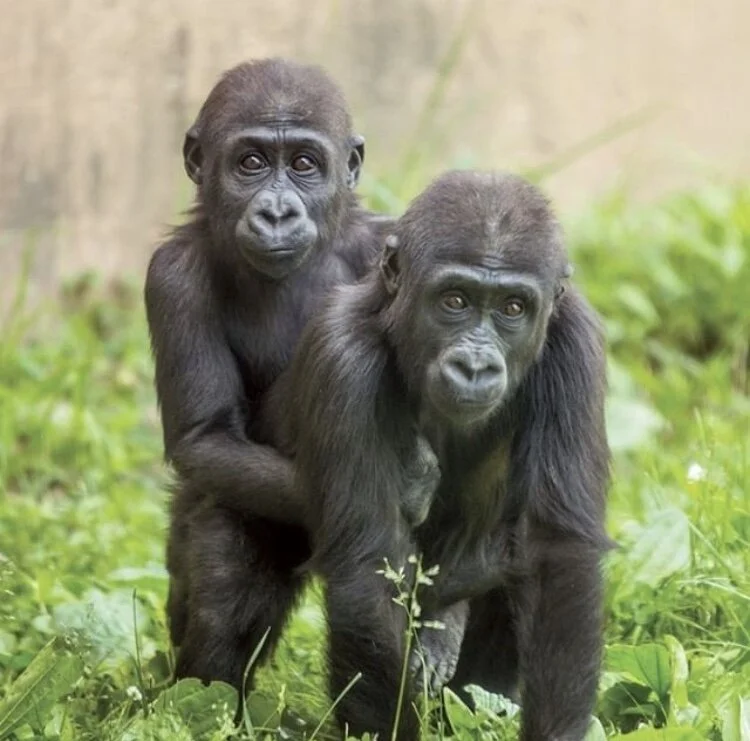Philadelphia Zoo Celebrates Animal Moms for Mother's Day and Announces New Babies
/This Mother’s Day, Philadelphia Zoo (3400 Girard Ave) will honor all of its animal moms living at the Zoo. Spring is in the air and the Zoo welcomes many new babies making this a very special year for the Zoo. The Zoo is proud to introduce the following new babies and their Moms, including Black & White Ruffed Lemurs, Andean Geese, Sebastopol Geese, and of course, the Sloth Bear Cub. Additionally, Kira and Honi are busy gorilla moms raising toddlers Ajabu and Amani. As a special Mother's Day message for Moms here and around the country and globe, Philadelphia Zoo shares a special Mother's Day video spotlighting these new moms and their babies.
“Our staff has been very busy with a host of new births at the Zoo,” says Andy Baker, Chief Operating Officer. “We look forward to welcoming our guests back to visit our new additions.”
New Moms Include:
Sloth Bear:
In December, a delightful sloth bear cub was born to Kayla, the Zoo’s 7-year-old female and 6-year old Bhalu. Debuting in March on the Zoo’s new Facebook Live Program- Philly Zoo at 2pm, the cub is growing by leaps and bounds. In April, the Zoo enlisted the help of the public to choose its name. The cub’s keeper team assembled a set of possible names, which were connected by geography or language to sloth bears’ native range in India, Sri Lanka and Nepal. One problem – because we’ve been almost entirely hands-off with the cub, we’re actually not sure of the sex – the keeper team is leaning toward male, but hasn’t committed yet! So, the potential names all needed to be appropriate for either a boy or girl.
Voting was a weeklong event, and there was an overwhelming response, with close to 200,000 people voting online. The favorite name, with 53% of the votes: Keematee which means “precious” in Hindi. No question the cub, regardless of sex, is all that and more. This birth is important as Sloth bears are listed as Vulnerable in the wild by the International Union for Conservation of Nature (IUCN).
Black & White Ruffed Lemurs:
In April, PECO Primate Reserve welcomed new youngsters, a litter of two black-and-white ruffed lemurs born to 13-year-old mother Kiaka. Father Huey was himself born here at the Zoo 14 years ago. The twins, named Mikey and Olivia, live with mom and dad as well as older
brothers Connor and Lucas, born in 2019, and Bob born in 2018. The whole group can frequently be seen bounding through Zoo360®, although the new youngsters are not quite ready for that. Black-and-white-ruffed lemurs are listed by IUCN as Critically Endangered in their native home in the tropical rainforests of eastern Madagascar.
Andean Geese:
April was a busy month at the Zoo, including the hatching of six Andean geese in the Zoo’s Bird Valley. Andean geese sport spectacular skunk-like black and white feathering at hatching, with pink feet and a short pink bill. Ready to go almost at hatching, the goslings scurry about at high speed under the protective eyes of their parents. Naturally herbivores, Andean geese have been called “cows with feathers”. Native to the Andes Mountains of Chile, Bolivia, Argentina and Peru, they are primarily terrestrial, spending more time on land than in the water. Listed as Least Concern in the wild by the International Union for Conservation of Nature (IUCN), this species is relatively well protected from human encroachment due to inaccessibility, but unregulated hunting of geese and collection of eggs does impact local populations.
Sebastopol Geese:
Right next door to the Andean geese, our Sebastopol geese also had six eggs hatch in April. Sebastopol geese are a domestic goose breed, originally developed in Europe and popular beginning in the 1860’s. Like other domestic breeds, they are descended from the wild graylag goose native to Europe. They have remarkable and beautiful long, white curly feathers and bright blue eyes.
Additionally, Kira and Honi are busy gorilla moms raising toddlers Ajabu (born June 2017) and Amani (born August 2016).
Be sure to tune in every day to PhillyZoo@2. For more information visit, www.PhiladelphiaZoo.org. Stay connected through Facebook: PhiladelphiaZoo; Instagram: @philadelphiazoo; Twitter: @phillyzoo.
ABOUT PHILADELPHIA ZOO:
Animals are on the move like never before at Philadelphia Zoo with Zoo360, a first-in-the-world system of see-through trails passing through treetops, crossing over pathways and connecting habitats, giving animals like amazing big cats, majestic primates and marvelous meerkats the opportunities to travel and explore. Visit our baby sloth bear cub, young western lowland gorillas, giraffes, hippos, white rhino, zebras, red pandas, Amur tigers and more at America’s first Zoo. Explore our 42-acre Victorian garden and enjoy award-winning exhibits like Big Cat Falls, PECO Primate Reserve, McNeil Avian Center and KidZooU, a wildlife academy that offers dynamic displays, rare breeds and hands-on experiences. Philadelphia Zoo is the second highest ticketed attraction in Philadelphia, one of the region's foremost conservation organizations and home to nearly 1,300 animals, many rare and endangered. By connecting people with wildlife, Philadelphia Zoo creates joyful discovery and inspires action for animals and habitats. The Zoo welcomed more than 1.25 million visitors last year. Philadelphia Zoo is accredited by the Association of Zoos and Aquariums. Philadelphia Zoo is a non-smoking facility.


























